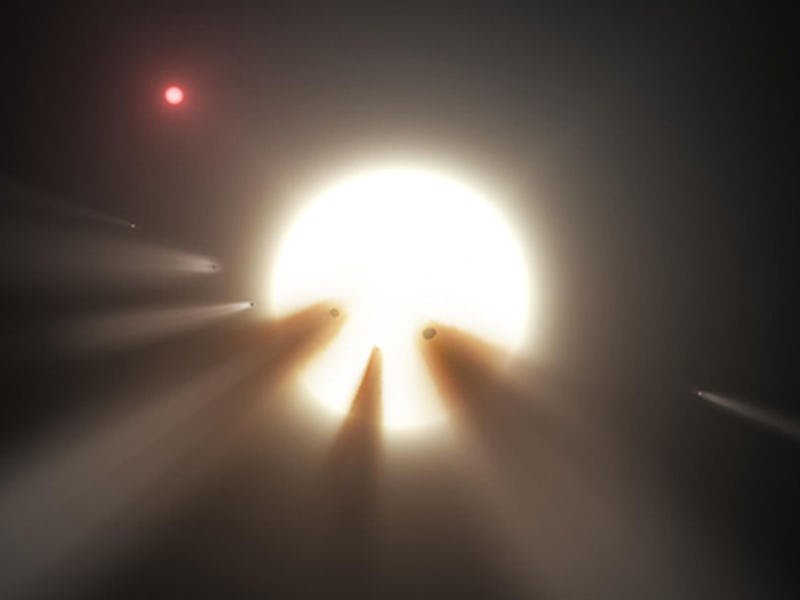The 'Alien Megastructures' Star Definitely Has Nothing to Do With Aliens
A new study all but extinguishes hope we found signs of an E.T. civilization.

In October there was a little fun speculation that astronomers had found alien megastructures out in space: About 1,480 light years away, the Kepler telescope picked up some strange patterns of light that had no clear explanation — and of course, the wildest theories hypothesized that we were watching a massive object built by intelligent aliens transiting a distant star.
In the intervening months, hope that those strange light patterns were caused by alien megastructures both dwindled (multiple times, actually!) and flourished.
Yet a new study submitted to the Astrophysical Journal about the star in question, KIC 8462852 (a.k.a. Tabby’s star), puts the kibosh on the theory. An international team of astronomers has concluded that there’s no evidence that the brightness of Tabby’s star has been fluctuating over the last century.
When astronomers look for exoplanets, they’re basically pointing the Kepler Space Telescope (or other instruments) toward distant stars and observing a dimming or brightening of the light emitted. That change is usually an indication that some object is orbiting the star — and further analysis can help conclude exactly what that object is and its major characteristics.
This whole alien megastructures theory started when scientists pored over data collected on Tabby’s star and, well, couldn’t make sense of it. The explanations ranged widely, but the one that caught the most attention was a theory that the strange light was caused by a gigantic structure built by an intelligent alien civilization that was orbiting the star.
The research team for this latest study decided to compare that light data with other data collected from other sources. And it led them to conclude that the light we’re picking up from Tabby’s star actually wasn’t dimming and brightening as initially thought.
“Whenever you are doing archival research that combines information from a number of different sources, there are bound to be data precision limits that you must take into account,” said Vanderbilt University astronomer and study coauthor Keivan Stassun in a news release. “In this case, we looked at variations in the brightness of a number of comparable stars in the DASCH database and found that many of them experienced a similar drop in intensity in the 1960’s. That indicates the drops were caused by changes in the instrumentation not by changes in the stars’ brightness.”
Still, the dips in brightness Kepler picked up have a real cause. They are still strangely irregular in a way that indicates something is moving through that star system — and it’s probably not a normal planet. The best explanation so far is a swarm of thousands of comets, although unfortunately this doesn’t explain why the star was dimming over an entire century.
Tabby’s star almost certainly has nothing to do with aliens, but it continues to be one of the most intriguing systems in the known universe.